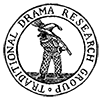The vikivaki (or, as some have translated it, the "wiggle-waggle") was a popular form of song-dance that seems to have been very much in fashion over a period of some two hundred years in Iceland. Parallel in many ways to the modern "acid house" gatherings, the vikivakievenings which commonly took place in large farmhouses some distance away from the authorities at around Christmas. They drew participants from near and far, for an evening of dance, song, large scale drinking and population replenishment. This, however, was not all that took place. The proceedings were also spiced up by a generous helping of dramatic entertainment, as various troll, animal and monster figures regularly appeared out of the smoke between dances to terrify and draw people into contact. For many commentators, this was the foundation that was later to lead on the establishment of formalised theatre in Iceland. The intention in this paper, however, is to re-examine the nature of the dance games that are associated with the vikivaki gatherings, their function and structure, as well as their roots. As I mean to demonstrate, in all likelihood, what we are seeing here is are the remains of a Scandinavian guising tradition (like that still practised in the Faroes and Shetland) which has adapted itself to the unique circumstances of the Icelandic environment as it was at this time.
The vikivaki games (which I have previously touched on in my book, The Origins of Drama in Scandinavia) can be divided into dramatic wooing games (most of which have direct parallels in Norway and Denmark) and then other dramatic activities centering around the visit of a figure from the wild to the "civilised" community, a figure which those inside then attempt to pacify. Various loose suggestions have been given for the origin of some of these animal games, which include a horse, a goat and a hart. Some suggest that the horse figure (which is shoed as part of an accompanying song) must have an origin in the Basque area of Spain. Others try to explain the candlelit "hart" that appears as a holy Christian symbol. Neither of these explanations makes much sense in the context of the tradition as it existed, or Icelandic history. As I mean to show, it is much more logical to consider the games – and the accounts about them – in the context of the popular dramatic traditions from neighbouring countries, i.e., Norway, Denmark, the Faroes and the British Isles, rather than in countries from farther afield. Seen in this light, they might then provide useful evidence for the nature of those traditions at the time they were imported to Iceland.
